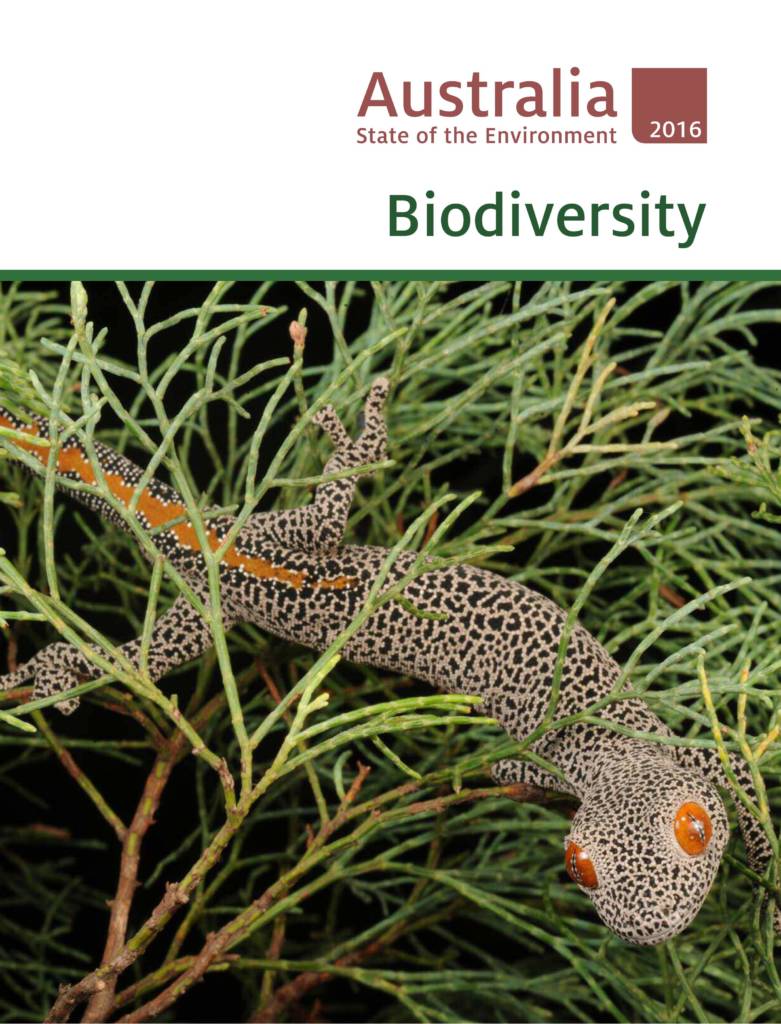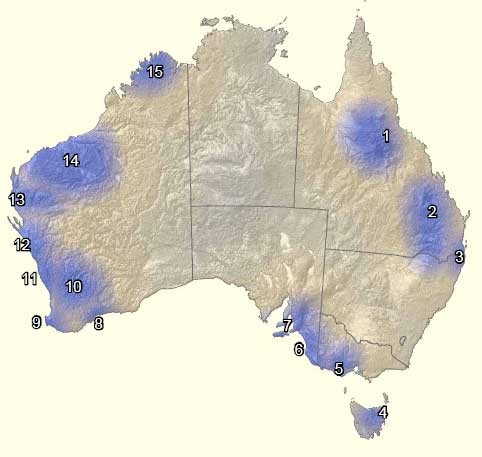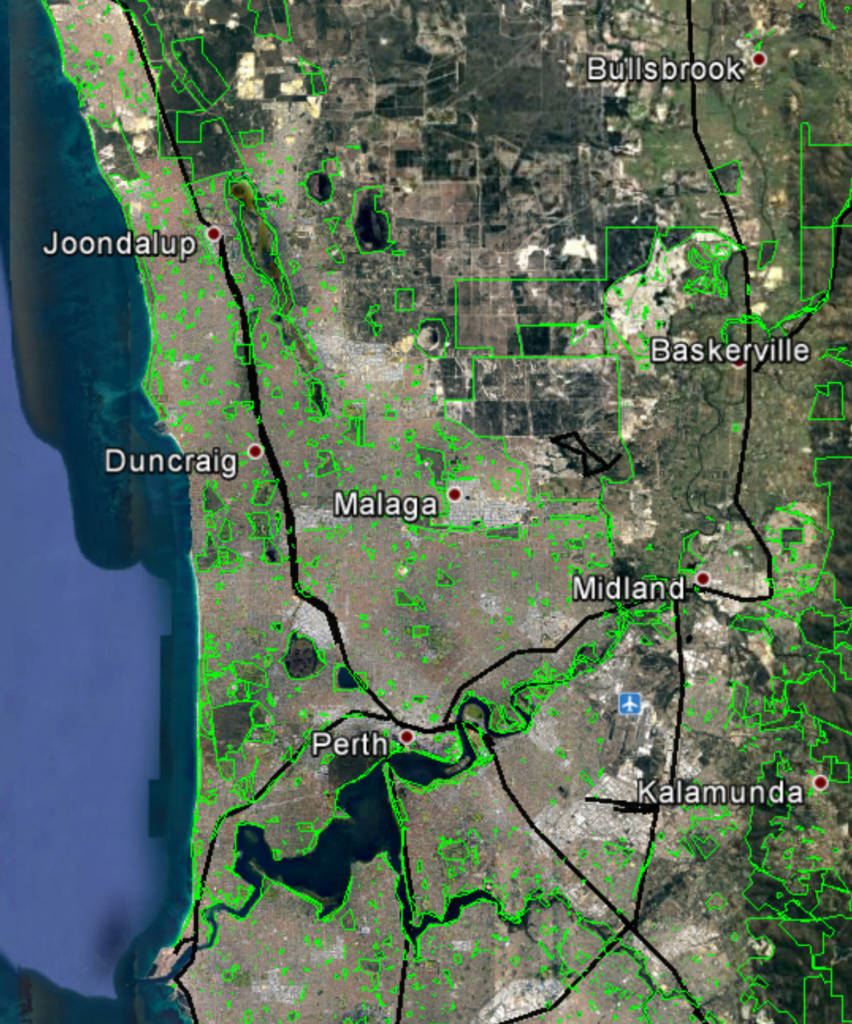The State of the environment report was released in March 2017. The Commonwealth Department of Environment and Energy releases the State of the Environment report every 5 years to provide an update on the state of the environment at a national level. The report focuses on several environmental themes, and biodiversity is one of the main themes.

Biodiversity is a key part of Australia’s national identity. It is integral to subsistence and cultural activity for Indigenous Australians, and is fundamentally important to environmental services that support human health and wellbeing, it is economically important to a wide range of industries (e.g. tourism, agriculture, pharmaceuticals). So, what is biodiversity? Natural or biological diversity, or biodiversity, is all life on earth—plants, animals, fungi and microorganisms—as well as the variety of genetic material they contain and the diversity of ecological systems in which they occur. It includes the relative abundance and genetic diversity of organisms from all habitats including terrestrial, marine and other aquatic systems.
Why is biodiversity important? We are dependent on it for our food, water, health, well-being and enjoyment of life on biological systems and processes. Humanity derives many medicines and industrial products from wild and domesticated components of biodiversity. The natural environment also provides us with recreation and tourism resources, and underpin the ecosystems which provide us with many services. While the benefits of such resources are considerable, the value of biodiversity is not restricted to these. The enormous diversity of life in itself is of crucial value, probably giving greater resilience to ecosystems and organisms.
Why is biodiversity important for Western Australia? Eight out of the fifteen biodiversity hotspots in Australia are located in Western Australia (WA), and the South Western biodiversity hotspot is an international hotspot.

(Source: DoEE)
In order to conserve our biodiversity, the report seeks to understand the key pressures on the biodiversity. The key pressures on biodiversity impacting WA include:
- Habitat loss or modification is resulting from introduced plants (weeds) or plant diseases, vegetation clearing, fragmentation and edge effects, altered fire regimes, or altered hydrological regimes, including salinity and acidification.
- Introduced or feral animals cause a range of pressures on biodiversity, including; predation (e.g. foxes, rats, feral cats), competition for food and/or habitats (e.g. camels, donkeys, goats, rabbits, feral cattle), and ingestion (e.g. cane toads).
- Emerging and spreading of plant diseases including; phytophthora dieback, canker and myrtle rust.
- The changing climate is also bringing a range of pressures—in particular, the drying climate, such as in the south-west, is affecting a range of species.
The pressures affecting biodiversity remain largely consistent with those identified in the 1996, 2001, 2006 and 2011 state of the environment reports.
Few of the pressures documented occur in isolation. Rather, pressures interact, often compounding the threat to biodiversity. For example, land clearing removes natural habitat and typically replaces it with agricultural, urban or industrial development, which may bring additional pressures such as grazing or pollution. In addition, remnant vegetation after land clearing is often fragmented and isolated. Fragmented woodland landscapes have been shown to have more vertebrate pests than intact woodlands (Graham et al. 2012).

(Source: Google Earth)
Interactions of multiple pressures with climate extremes is an area of intense debate. In the past 5 years, Australia has seen record-breaking summer temperatures in some places, particularly in 2012–13. Monitoring of the occurrence and severity of daily fire weather increased, with statistically significant increases at 16 of 38 climate reference sites in Australia from 1973 to 2010, and non-statistically significant increases at the other sites. As well, extreme fire-weather days became more extreme at 24 of the 38 locations since the 1970s (BoM & CSIRO 2014). The most significant increases occurred in the south-east, and the largest increases occurred inland.
Quantifying the cumulative impact of climate extremes interacting with multiple pressures affecting biodiversity (invasive species, habitat fragmentation and clearing) is extremely difficult, but this cumulative impact is widely considered to be a key threat across terrestrial and aquatic habitats. The SoE report notes that climate pressure has only recently started to become a significant detectable impact.
It is important to note is that our understanding of the full impact of these key pressures on biodiversity is generally considered to be low because of the inadequacy of long-term data and monitoring.
Specifically, for WA’s biodiversity the SoE Report found:
- No indication that the major pressures on biodiversity noted in the 2011 SoE report have decreased.
- The number of threatened species and threatened ecological communities has increased since 2011.
- The cumulative impact of multiple pressures and the interactions between them amplify the threat faced by biodiversity.
- Vegetation clearing rates have stabilized across all jurisdictions since 2011, except Queensland, where clearing rates have increased.
- Knowledge about the distribution and abundance of invasive species and their impacts on biodiversity remains incomplete and a high risk to the resilience of biodiversity.
- It is not possible to assess the overall long-term effectiveness of management actions taken to limit the impact of invasive species.
- Reducing the impact of feral predators is an essential action for the conservation of Australian fauna.
- Reducing the impact of feral herbivores is an essential action for management of Australian ecosystems.
- The nature of impacts of climate change on biodiversity is becoming better understood.
- Continuing population growth in urban and peri-urban areas impacts surrounding natural ecosystems directly and indirectly.
- Evidence for the effectiveness of recovery planning for threatened species is variable. Little evidence exists to suggest improvement in the state or trend of most threatened species.
- Ongoing improvement of our knowledge of the distribution, diversity and taxonomy of invertebrates (including subterranean fauna) and fungi is critical for management. management.
- The lack of data and information from long-term monitoring of biodiversity is universally acknowledged as a major impediment to biodiversity conservation.
- Translocation of threatened species to offset development is increasingly used as a tool of last resort in conservation management and recovery planning.
- Significant progress has been made in expanding Australia’s National Reserve System since SoE 2011.
- The critical importance of Indigenous land management to the ongoing maintenance of biodiversity is increasing and becoming better understood.
- Some government initiatives for biodiversity discovery and management have ceased, while new activities have begun, but they have not been able to halt overall decline.
- Citizen scientists involved in biodiversity monitoring and discovery have contributed to our understanding of the state and trends of biodiversity and pressures.
- Rapid improvement in technology is likely to lead to significant improvements in our understanding of Australia’s species and genetic diversity.
What can you do to stop or slow biodiversity losses? Volunteer with a local community group to assist with revegetation activities and pest control activities in your local area, create a natural native garden, if you work with companies that clear land, limit clearing where ever possible and undertake rehabilitation activities as soon as practical. Also, consider taking time to assess how the continued loss or decline in biodiversity may impact your business or community, use best practice environmental management strategies in your business, and reviewing your legal obligations for managing biodiversity for your business. Integrate Sustainability has experienced staff that are able to assist identifying your legal obligations for biodiversity management and provide advice on best practice environmental management practices for your business or community.
Visit it use at www.integratesustainability.com.au or call 0894680338
